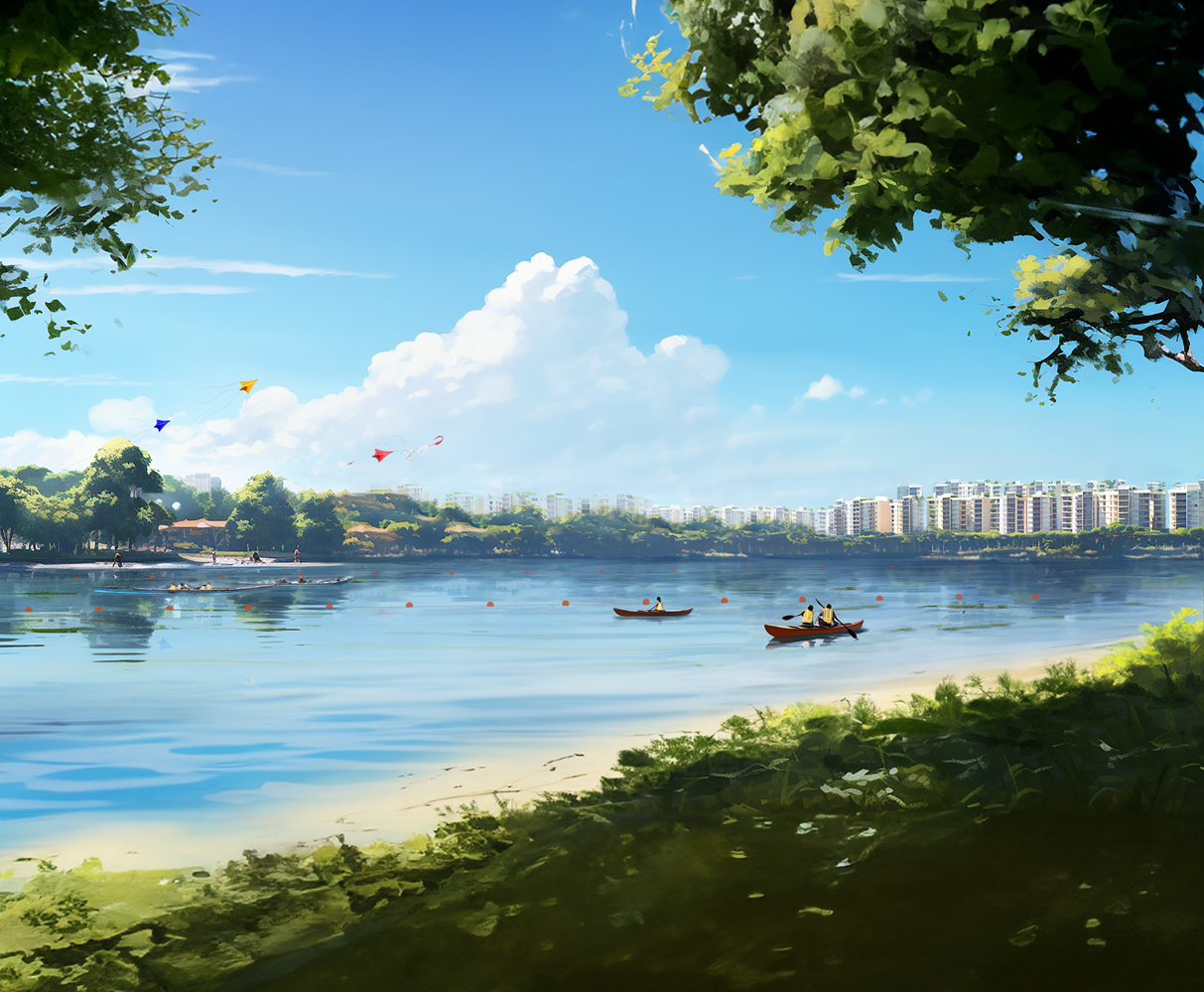- Home
- Themes
- Strengthening Urban Resilience
- A Flood Resilient City & Coast
A Flood Resilient City & Coast
Singapore is enhancing our flood resilience while planning for an adaptable coastline that protects against rising sea levels.
On this page
By 2100, extreme daily rainfall is projected to increase across all seasons. Relative mean sea levels around Singapore could rise as much as 1.15 metres too. With storm surges and daily tidal activity, this could increase to between 4 and 5 metres. Singapore’s coastlines are susceptible to flooding because about 30 percent of its land area is less than 5 metres above mean sea level today. A comprehensive approach to manage both inland and coastal flooding risks is thus vital for our urbanised coastal city with abundant rainfall.
Minimising inland flooding
Singapore has reduced its flood-prone areas from about 3,200 hectares in the 1970s to less than 25 hectares today — primarily due to the source-receptor-pathway approach employed by PUB, Singapore’s national water agency.

Source: PUB
Planning for an adaptable coastline that protects
The coastline can be protected through various coastal protection measures, including sea walls, earth mounds, tidal gates and nature-based solutions.

Source: PUB
Since 2021, the Government has been conducting site-specific studies to develop adaptation strategies. They factor in the unique characteristics of the area and are integrated with long-term development plans.
By 2026, site-specific studies for over 80 percent of Singapore’s coastlines will be in progress, with measures implemented progressively from the 2030s.
Community ideas for multi-functional coastlines
The Greater Southern Waterfront and Changi coastline provide opportunities to explore different types of coastal protection solutions to create a continuous line of defence.
During public engagements, the community has expressed a desire to preserve biodiversity, retain coastal heritage and maintain public access to the sea. There are also aspirations for multi-functional coastlines, which could be realised through long-term planning.
Highlights from ‘Our Coastal Protection Conversation’, a 2023 engagement with the community:

Ideas for Changi coastline

Ideas for the Greater Southern Waterfront
Shaping ‘Long Island’ together

First conceptualised in the 1991 Concept Plan and announced at the National Day Rally in 2019, the 'Long Island' project will reclaim land off the East Coast to protect the low-lying southeastern coastline from rising sea levels. It will also address multiple national needs and create new recreational opportunities for the area.

Planning for tomorrow

Coastal protection
Reclamation at a higher level so new land can provide protection against sea level rise

Water resilience
New freshwater reservoir to enhance our water supply

Flood resilience
Two barrages and pumping stations for flood management

More land
For future land use needs such as waterfront living and supporting amenities

New opportunities
Around 20 km of new waterfront parks and new recreational destinations
Since public engagements began in 2024, over 3,000 people from all walks of life have shared their views. Participants agree on the need to protect the East Coast and appreciate the ‘Long Island’ solution with its multiple national benefits.
Tertiary students drew up exciting possibilities for ‘Long Island’ in the Challenge for the Urban and Built Environment (CUBE)!
More in-depth engagements will take place as technical studies progress in the coming years. Insights from these dialogues, along with findings from the technical studies, will inform the development of ‘Long Island’.

